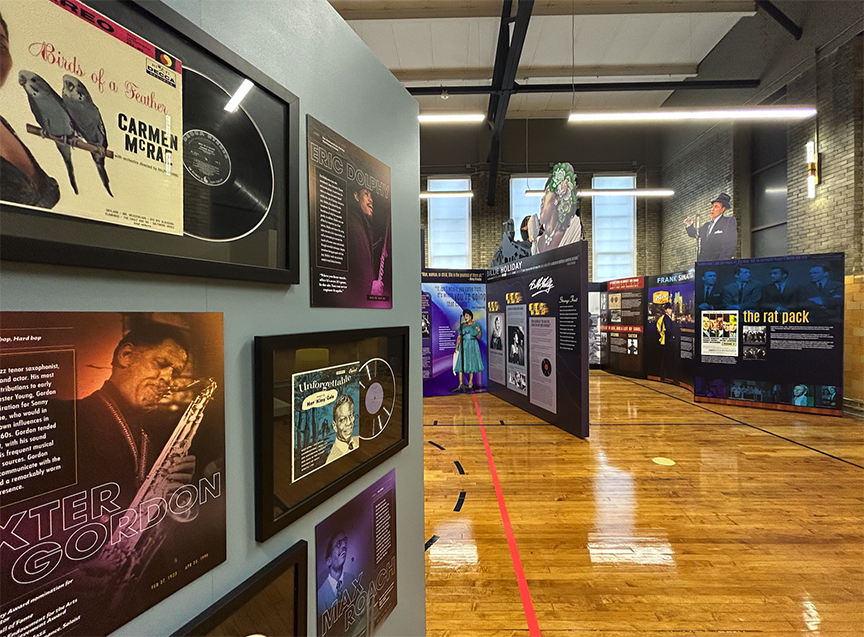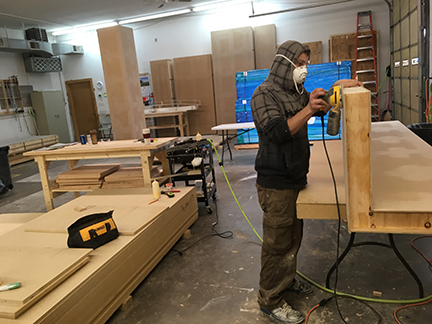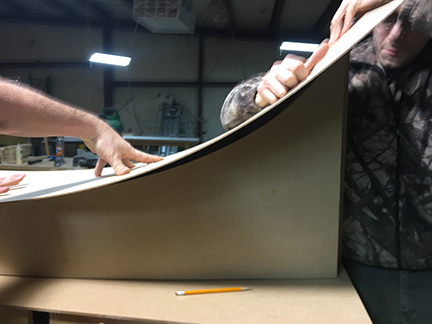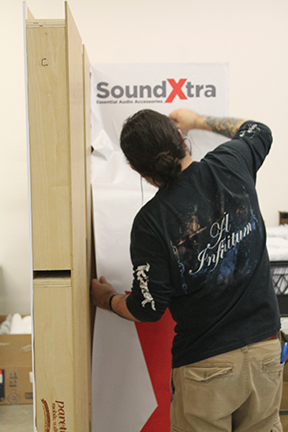Growing a Company
From the first sale, to record-breaking sales
Pareti Mobile Walls originated from the idea of simplifying portable wall installation for both commercial and residential clients. Through this began as a hunch, through extensive market research, we identified a demand for individuals seeking a more straightforward and cleaner method to create freestanding walls within their interior spaces, as opposed to conventional construction approaches.
Our products provide innovative and modular architectural solutions, catering to renowned museums, historical institutions, art departments in educational settings, furniture store chains, and commercial clients requiring robust trade show displays for showcasing heavy products. Pareti also serves businesses in need of temporary structures for office partitions or secure storage areas.
After in-depth market research, it became evident that there was a significant market demand within the museum and art gallery sectors. Leveraging my expertise in business development, marketing, web design, content development, SEO, and graphic design proved instrumental in the successful launch of the company. A decade later, over 90% of Pareti’s sales are generated organically through inbound sales calls and inquiries, while the remaining 10% come from referrals and advertising.
Now, in our 10th year, our sales continue to grow during economic slowdowns.

Above, Pareti’s mobile walls solve an important need for historical museums, and commercial tenants such as art gallery owners, who need additional surfaces for exhibits and art displays without altering their existing rented spaces by adding permanent walls. Customers also have the added benefit of keeping their investment when they move.
Below, I designed and art directed graphics for a jazz museum, oversaw content development for over 50 jazz artists, including full displays. Oversaw printing and graphics, as well as provided project management for all fabrication, logistics, and on-site direction for installation.

Marketing, Data Analytics, Product Development, Sales
-
Strategic Planning: Developed and implemented sales and marketing strategies aligned with the overall business objectives. Set revenue targets, expansion goals, and brand positioning strategies.
-
Team Leadership: Lead and manage the sales and marketing teams, provided guidance, motivation, and support. Recruited, trained, and developed staff to ensure a high-performing and cohesive team.
-
Sales Management: Oversaw sales operations, including the development and execution of sales plans, pricing strategies, and distribution channels. Monitored sales performance, analyzed sales data, and implemented strategies to achieve revenue targets.
-
Marketing Management: Developed direct marketing initiatives, including advertising, public relations, digital marketing, and branding activities. Developed and executed marketing campaigns to generate leads, enhance brand awareness, and support sales efforts.
-
Market Research: Remained informed about industry trends, competitor activities, and customer preferences. Conducted continuous market research to identify opportunities for growth and areas for improvement.
-
Product and Service Development: Provided product development to ensure that products and services align with market needs. Developed content for product features, pricing, and positioning.
-
Customer Relationship Management: Fostered strong relationships with key customers and clients. Ensured customer satisfaction and loyalty through effective communication and responsive service.
-
Budget Management: Developed and managed budgets for sales and marketing activities. Allocated resources effectively to maximize return on investment.
-
Performance Metrics: Established and monitored key performance indicators (KPIs) to measure the success of sales and marketing initiatives. Analyzed data to identify trends, challenges, and opportunities for improvement.
-
Cross-functional Collaboration: Ensured alignment and coordination across the organization.
-
Strategic Partnerships: Identified and cultivated strategic partnerships with other organizations that can contribute to sales and marketing objectives.
Our latest successful product launch is our Rolling Portable Walls, as seen in the video above. This solution filled a large need in the portable wall market. Many smaller museums and galleries do not have the staff to set up our traditional-style mobile walls, yet still have a need for hanging large or heavy objects. After years of trial and error we created a truly stable, portable, and shippable product. Within the first quarter of the product launch Pareti sold over $150k of this style of walls, dramatically overtaking our original standard exhibit walls, and outpacing production.
Operations
Pareti functions as a team with a family-oriented approach, providing flexible work hours, generous paid time off, and fostering a strong sense of teamwork and gratitude. As some employees embark on their first full-time job with Pareti, comprehensive training takes precedence, with a particular emphasis on safety. Additionally, we welcome experienced team members aged 50 and above, whose wealth of knowledge and strong work ethic serves as both inspiration and mentorship for younger colleagues.
In the realm of a novel invention and a newly established company, there were no pre-existing processes, established procedures, or policies. Over the course of our ten years in operation, all these elements have been meticulously developed and refined.
Pareti’s R&D projects have resulted in significant improvements in the manufacture of our products.
Parts production, once a lengthy process, improved its process time by 90.63%, turning an hours-long process into a 45-minute process, while also significantly improving safety.
Quality control measures have resulted in overall improved customer satisfaction by offering better finishes, cleaner products upon arrival, less shipping damages, and an overall better unboxing and set up experience for customers.
Logistics are also a major factor for our products, as our customers are across the continental USA and Canada. As a result, shipping can be profoundly expensive. In Pareti’s case, on the sales side, optimizing crating, packing, and shipping makes quoting shipping routine and simple. We’ve also created online unloading instructions and videos to prepare customers for receiving and unloading by hand.


Operations, process engineering, logistics, and safety
-
Production Planning and Scheduling: Developed and implemented production schedules, ensuring that manufacturing processes are aligned with demand forecasts and delivery timelines.
-
Resource Management: Efficiently allocated resources, including manpower, equipment, and raw materials, to meet production targets and minimize waste.
-
Quality Control: Established and enforce quality control measures to ensure that products meet specified standards. Implemented corrective actions when necessary to address defects or deviations.
-
Process Optimization: Continuously assessed and improved manufacturing processes to enhance efficiency, reduce costs, and increase overall productivity. Implemented lean manufacturing principles.
-
Health and Safety Compliance: Ensured manufacturing complies with all health and safety regulations. Implemented and enforced safety protocols to create a secure working environment.
-
Supply Chain Coordination: Collaborated with suppliers to maintain a steady and reliable flow of raw materials. Monitored inventory levels and implement strategies to prevent shortages or excesses.
-
Team Leadership: Lead and managed production teams, providing guidance, training, and support. Fostered a positive work environment that encourages teamwork and continuous improvement.
-
Budget Management: Developed and managed budgets related to production costs, labor, and other operational expenses. Identified areas for cost savings without compromising product quality.
-
Communication and Coordination: Collaborated with other departments, such as logistics, maintenance, and quality assurance, to ensure smooth coordination and communication across all facets of the manufacturing process.
-
Problem-solving: Addressed and resolved operational challenges and bottlenecks promptly. Implemented preventive measures to minimize the likelihood of recurring issues.
-
Regulatory Compliance: Stayed informed about and ensure compliance with relevant industry regulations and standards.
